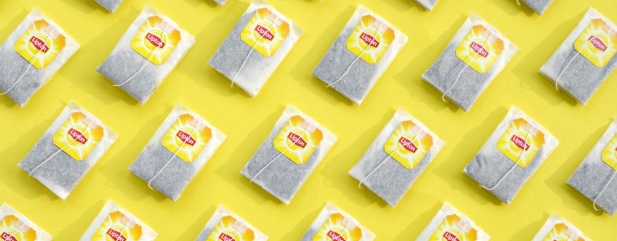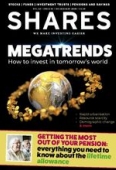Archived article
Please note that tax, investment, pension and ISA rules can change and the information and any views contained in this article may now be inaccurate.
Unilever needs to revive growth to reignite its share price

Consumer goods firm Unilever (ULVR) has found itself at a crossroads at the start of a new decade having ended 2019 with a whimper. It warned on sales growth in a disappointing trading update on 17 December.
The timing of the update was poor given the company had spent a large part of a recent investor day talking up plans to prioritise growth.

This increases the pressure on chief executive Alan Jope, in post since the beginning of 2019, as he looks to reshape the business. The performance of the shares in the short to medium-term is likely to be dictated by the extent to which this process can revive growth.
At the same time the business may need to mend some fences with investors bruised by an abortive attempt in 2018 to re-domicile the business outside the UK.
Now is not the time to own the shares. Market sentiment is likely to be weak towards Unilever until it can provide enough evidence that its problems have been fixed.
GROWTH DAMPENED AMID INDIAN MONSOONS
The group focuses on three key divisions: Beauty and Personal Care, Foods and Refreshment, and Homecare. Emerging markets comprise around 60% of total group sales and this exposure contributed to December’s revenue warning.
In the brief pre-Christmas update, Unilever said it expected underlying sales growth for 2019 to be slightly below previous guidance of revenue, coming in at the ‘lower half of its 3% to 5% multi-year range’ amid fourth quarter challenges in some of its markets. First half growth in 2020 is also expected to be below 3%.
In mitigation the firm pointed to an economic slowdown in South Asia, notably in the key market of India where monsoons and a sluggish jobs market have impacted consumer spending.
UNILEVER’S ATTRACTIONS
The strength of brands like Lipton tea, Hellman’s mayonnaise and Magnum ice cream, backed by heavy marketing spend, makes Unilever a fixture in shoppers’ cupboards at home and the company is also entrenched in the supply chains of the retailers which stock its products. It also enjoys real global diversification.
These attributes had helped the FTSE 100 firm achieve consistent sales growth for a long time. More recently this growth has started to soften as the pricing power of some brands has weakened and upstart niche players have emerged, causing the stock to lose some momentum.
The Anglo-Dutch outfit has made a large number of acquisitions in the past five years but the focus has now switched to getting the most out of these acquired assets and selling off stuff which is growing more slowly.
By doing so the hope is the growth rate and level of returns for the overall group can improve.
FOCUS ON THE RIGHT BRANDS
This approach of parting with low-growth brands has already been road-tested, with the £6bn sale of the company’s margarine and spreads divisions announced in December 2017.

Unilever is also continuing to take costs out of the business through the digital transformation of its factories, supply chain, advertising and administrative function. The company made a big effort in this area after successfully rebuffing a takeover attempt by US rival Kraft Heinz in 2017.
This effort has involved using automation, robots and machine learning to operate more efficiently and employing data to target the right products at the right markets. For example, the company has installed web-connected sensors on machines in its factories to help fine-tune the way they function to achieve optimum results.
Indications that the company can sustain the current pace of €2bn annual cost savings beyond 2020 could free up money to invest in its operations and brands and help boost profitability.
As well as being forward-thinking on technology, Unilever is out in front on sustainability. This increasingly matters to both consumers and investors.
Beauty & Personal Care
Proportion of group revenue Q3 2019: 42.1%
Key brands: Lynx, Dove, Lux, Rexona, Sunsilk, TRESemmé, Signal, Lifebuoy and Vaseline.
The largest division has been a focus of the company’s purpose-led marketing, linking its products to environmental and social issues. Unilever is looking to boost its exposure to the premium beauty space given the higher margins these products command.
Foods and Refreshment
Proportion of group revenue Q3 2019: 37.6%
Key brands: Knorr, Hellman’s, Marmite, Magnum, Lipton and Wall’s
The company merged its food and refreshment businesses when it sold its spreads business in 2014. Healthier food categories are being targeted to tap into shifting consumer trends. This part of the group really benefits from entrenched relationships with retailers.
Homecare
Proportion of group revenue Q3 2019: 20.3%
Key brands: Persil, Omo and Cif
The smallest unit is also the fastest growing, reflecting its heavy exposure to emerging economies which account for around 80% of its revenue. The company has leading positions in the detergent and cleaning supplies markets.
FINDING A PURPOSE
Its activities include purpose-led marketing, linking its brands with social and environmental causes, while looking to source raw materials sustainably and reducing the environmental footprint of its products.
However, Jope will be judged first and foremost on the hard currency of consistent growth. Investors are likely to be watching the outlook commentary which accompanies full year results on 30 January, to see if there is any guidance on 2020 as a whole.
Until there is more confidence in the company’s ability to grow its revenue organically the stock may struggle to perform. A price-to-earnings multiple of 18.8 based on consensus forecast earnings for 2020 is relatively undemanding but not compelling given the recent sluggish showing from the group.
Important information:
These articles are provided by Shares magazine which is published by AJ Bell Media, a part of AJ Bell. Shares is not written by AJ Bell.
Shares is provided for your general information and use and is not a personal recommendation to invest. It is not intended to be relied upon by you in making or not making any investment decisions. The investments referred to in these articles will not be suitable for all investors. If in doubt please seek appropriate independent financial advice.
Investors acting on the information in these articles do so at their own risk and AJ Bell Media and its staff do not accept liability for losses suffered by investors as a result of their investment decisions.

 magazine
magazine








